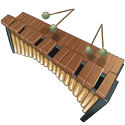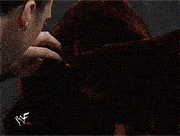|
A second Musica Analytica livestream has gone up, with 12tone, 8-bit Music Theory, Adam Nealy and Sideways. Haven't watched it yet, about to get on a plane, but will be as soon as possible. https://www.youtube.com/watch?v=MYhEDazNoBY
|
|
|
|

|
| # ? May 24, 2024 15:26 |
|
Konsek posted:A second Musica Analytica livestream has gone up, with 12tone, 8-bit Music Theory, Adam Nealy and Sideways. Haven't watched it yet, about to get on a plane, but will be as soon as possible. I watched it live and it was great. They discussed the Ed Sheeran case, the legal parts of their channels, how they got into being youtubers, how they go about making videos, some music history, and took questions from the chat.
|
|
|
|
My favorite part is 1h38m where they talk about the lydian chromatic concept.
|
|
|
|
Has any of you used functional ear training and can give me some tips? I've been using this app for ios: https://www.youtube.com/watch?v=s2tnLenF9iQ It plays a I-IV-V-I and then a single note that fits in one of the chords (at the level I'm at). I can mostly guess when the note comes from the I-chord, but other than that I'm kind of lost. I'm not sure what I'm supposed to be listening for in the chords. Is it just a question of sticking with it?
|
|
|
|
I've used that app. Try going to the practice section and making a custom quiz, then pick a small subset of tones to start with, then work up from there. Maybe try with just the root, the 4th, and the 5th. Maybe sing "Happy Birthday" or some other song you know the intervals of to yourself when you aren't sure. There's also a stats section to show you which tones are the hardest for you. That can help you design new custom quizzes as you get better.
|
|
|
|
Helianthus Annuus posted:I've used that app. Try going to the practice section and making a custom quiz, then pick a small subset of tones to start with, then work up from there. That's the exercise I was stuck on (the very first one), but it clicked once I realized I was listening to scale-notes.
|
|
|
|
I posted this in the small questions thread and they said here would be a better place to ask: So I wrote a little song the chord progression of which is Ebminor > Emaj7 > C# > Ebminor I'm having trouble figuring out what key its in, or understanding how keys work in general with regards to this. I mean I've made this progression that sounds nice to me but how do I as, someone learning theory, go about determining which key this is in? What scales can I use to solo over it? Any help or resources would be much appreciated. I'm looking for stuff to help me understand more in general as well as for this specific little progression.
|
|
|
|
Kvlt! posted:I posted this in the small questions thread and they said here would be a better place to ask: there's no strict key this falls into, although there could be modal interchange. If you switch Eb to D#, you could have D# minor, where the Emaj7 acts as a bIImaj7. I'd say it's that just because it starts and ends on the Eb/D# minor.
|
|
|
|
Jason Sextro posted:there's no strict key this falls into, although there could be modal interchange. If you switch Eb to D#, you could have D# minor, where the Emaj7 acts as a bIImaj7. I'd say it's that just because it starts and ends on the Eb/D# minor. I agree with you about the modal interchange. As I said in the other thread, there's a lot of music that switches between minor modes. It definitely makes more sense with the first chord as D#. That way, the Emaj is from phrygian and the C#maj is from Aeolian.
|
|
|
|
So if I switch to D#, it would be D# phyrgian and aeloian correct? Or am I missing something about how modes and chords work
|
|
|
|
Kvlt! posted:I posted this in the small questions thread and they said here would be a better place to ask: When I can't place something in a key easily, there's often some kind of voice leading that can account for why it sounds good or "works". If you're up for it, post the song (or part of it) so we can listen in context. But on paper, the Db major (C# major) -> Eb minor at the end feels like a V -> vi deceptive cadence in the key of Gb Major. If that's right, it would make the E major a bVII chord. e: thought i made a goof in my analysis, but now that i think about it, i'm sticking to my original guess Helianthus Annuus fucked around with this message at 23:09 on Aug 19, 2018 |
|
|
|
Kvlt! posted:So if I switch to D#, it would be D# phyrgian and aeloian correct? Or am I missing something about how modes and chords work What instrument is this intended for? I feel like that Emaj7 is really a G#m/E, so you could make it a i-iv-bVII-i progression in natural minor, and you could also put the C# in first inversion so the bass walks up chromatically - D#m -> G#m/E -> C#/E# -> D#m. But the chords in minor are ambiguous on their own and that bVII-i isn't a strong resolution in itself, so whether you play D# natural minor or D# phrygian is up to you depending on what you like the sound of. That's true even if you choose a completely different scale by the way, the theory behind it is just to give you guidelines to help describe the sound you're hearing. As for Eb vs D# both have 6 accidentals and you'll need either Fb or E# so it gets a bit weird regardless, but where you mixed sharps and flats is probably what got you confused in the first place, so try not to do that. 
Scikar fucked around with this message at 23:26 on Aug 19, 2018 |
|
|
|
Scikar posted:I feel like that Emaj7 is really a G#m/E, so you could make it a i-iv-bVII-i progression in natural minor Most of the time, when the listener hears that E in the bass with the G# in the inner voices, they're gonna get a major chord feeling, not a minor chord feeling. I guess it's because the major 3rd interval between the E in the bass and the G# is gonna be perceived more clearly than the minor 3rd interval between the inner voices G# and B. But you can certainly change that feeling by altering the voicing of the chord, or even by boosting certain inner voices relative to others. If we could hear the song, then we could say for sure.
|
|
|
|
Kvlt! posted:So if I switch to D#, it would be D# phyrgian and aeloian correct? Or am I missing something about how modes and chords work Yeah, I think that analysis can work. D# minor and E maj7 are diatonic to D# phrygian (from key of B). D# minor and C# major are diatonic to both D# aeolian (from key of F#) and D# dorian (from key of C#). Once you decide what kind of 7th chord the C# would be, it puts you more firmly in a specific mode. D# minor and C# dom7 are only diatonic to D# aeolian (from F#). D# minor and C# maj7 are only diatonic to D# dorian (from C#). If you're looking to expand on this progression to form a new part in your song, I'd try adding chords diatonic to either B major, F# major, or C# major and see how it feels. e: added the bit about C# maj7 vs C#7 Helianthus Annuus fucked around with this message at 04:23 on Aug 20, 2018 |
|
|
|
If you wanna wile out on this, you can search hooktheory's tabs for the different kinds of borrowed chords that show up in the analysis of various songs. I can think of 3 different ways you could analyze D# minor > E maj7 > C# > D# minor into the major scale modes. If you like the vi -> bVII -> V -> vi analysis, here are songs with bVII (e.g., Emaj7 in the key of F# major) https://www.hooktheory.com/trends#node=b7&key=rel If ii -> bIII -> I -> ii, here are songs with bIII (e.g., Emaj7 in the key of C# major). There's a couple different ways you can analyze a major chord with a root on the second scale degree. https://www.hooktheory.com/trends#node=b3&key=rel https://www.hooktheory.com/trends#node=D3&key=rel If iii -> IV -> II -> iii, here are songs with II (e.g., C# in the key of B major). I'm assuming a dominant chord is OK here. https://www.hooktheory.com/trends#node=L27&key=rel https://www.hooktheory.com/trends#node=5/5&key=rel https://www.hooktheory.com/trends#node=57/5&key=rel Helianthus Annuus fucked around with this message at 03:01 on Aug 20, 2018 |
|
|
|
I wrote a quick python script to help me memorize my notes and intervals. I'm sharing it here in case anyone else wants to have instant recall of things like the minor 6th of F# or the interval between B and F.code:
|
|
|
|
Konsek posted:A second Musica Analytica livestream has gone up, with 12tone, 8-bit Music Theory, Adam Nealy and Sideways. Haven't watched it yet, about to get on a plane, but will be as soon as possible. I just found out, they're doing another one of these today at 4pm EST
|
|
|
|
I made an effort post on another forum that I thought people here might like. It concerns why power chords are preferred over major triads when playing rock music with high gain.quote:Regarding this question: is there a physical reason why power chords sound better than major triads when you're playing with high gain?
|
|
|
|
Thanks for everyones help with my last question. Here's another quick one that's probably a simple answer: So I'm jamming to a backing track of Sugaree by the Grateful Dead which is in the key of E major (the particular section had an E to B chord progression). I noticed that using the G# blues scale sounded good to me. My question is basically, why? Why does this scale work in that key? Or maybe it just sounds good to me and nobody else. Any insight would be greatly appreciated.
|
|
|
|
Could you go into a little more detail? I'm not 100% sure what you mean by "blues" scale, but I'll just assume for the moment it's minor pentatonic with a diminished fifth: the G# blues scale is completely diatonic to E major, except for that diminished fifth. G#-B-C#-D#-F# are the major third, perfect fifth, major sixth, major seventh and major second, respectively. The diminished fifth, D, can work together with G# to imply E7, which would still give it a blues-style feel.
|
|
|
|
The G# blues scale is the G# minor pentatonic with an added "blue" note. It sounds good against E major, because the G# minor pentatonic contains all the notes of E major. Here's your E major scale: E F# G# A B C# D# E Here's your G# minor pentatonic: G# B C# D# F# G# In the G# blues scale, we just take the G# minor pentatonic and wedge a D natural between C# and D# like this: G# B C# D D# F# G# In the key of E major, that D would be a bVII (flat 7), which is not in the key, but is still used all the time to achieve a certain color, or feeling. And actually, adding the bVII to the E major scale creates a new scale with 8 tones, called the E bebop dominant scale: E F# G# A B C# D D# E https://en.wikipedia.org/wiki/Bebop_scale#Bebop_dominant_scale which gets used all the time in jazz. But no need to learn any new scales in this case. Here, you can think of that D as a chromatic passing tone that works well in G# minor pentatonic and the E major scale.
|
|
|
|
That makes a ton of sense especially for someone like me who grapples a lot understanding theory, very clear explanation Thank you so much!
Kvlt! fucked around with this message at 17:06 on Aug 29, 2018 |
|
|
|
Jason Sextro posted:D can work together with G# to imply E7, which would still give it a blues-style feel. This is a really good point that I didn't mention. Its cool to use a lot of dominant chords to in blues, and hanging on the D (the bVII) in E major makes it feel like E mixolydian, which is home to the E7 chord. Helianthus Annuus fucked around with this message at 17:26 on Aug 29, 2018 |
|
|
|
Kvlt! posted:That makes a ton of sense especially for someone like me who grapples a lot understanding theory, very clear explanation Thank you so much! So I thought about this some more, and it turns out you can build 3 different minor pentatonic scales that will sound good against E major. If you build it off the 2nd scale degree, you get F# minor pentatonic: F# A B C# E F# If you build it off the 3rd scale degree, you get G# minor pentatonic: G# B C# D# F# G# If you build it off the 6th scale degree, you get C# minor pentatonic: C# E F# G# B C# All of these pentatonic scales are strictly contained by E major, and should sound good in theory. And I suspect the corresponding blues scales will sound good too. If you build it off the 2nd scale degree, you get F# blues: F# A B C C# E F# If you build it off the 3rd scale degree, you get G# blues: G# B C# D D# F# G# If you build it off the 6th scale degree, you get C# blues: C# E F# G G# B C# The blue note in F# blues is: C, which is the bVI (flat 6) in E major The blue note in G# blues is: D, which is the bVII (flat 7) in E major The blue note in C# blues is: G, which is the bIII (flat 3) in E major Kvlt, can you try playing F# blues and C# blues against Sugaree and see what happens?
|
|
|
|
Helianthus Annuus posted:So I thought about this some more, and it turns out you can build 3 different minor pentatonic scales that will sound good against E major. Sorry this took so long to get back too, but that's a wealth of great information to work off of for this song, thank you very much for writing that up! I tried both scales and they both sounded good to me. F# blues sounded better to me, but they both seemed to work. I'm coming back with another question: So I know in a major key harmonizing chord goes I ii iii IV V vi (then 7 is diminished) and I know how to harmonize chords in a minor key My question is, I've been experimenting with jazzy stuff and was curious if the same rules applied to all the 7th chords. So say I'm playing a jazzy tune in the key of A, would the 1st be Amaj7, the second be Bminor7th, etc? Or am I misunderstanding everything?
|
|
|
|
Kvlt! posted:So I know in a major key harmonizing chord goes I ii iii IV V vi (then 7 is diminished) If by harmonize chords, you mean build by stacking 3rds diatonic to the key, then yes. You get Amaj7, Bm7, C#m7, Dmaj7, E7, F#m7, G#m7b5. And you can keep going by adding more thirds to get 9th, 11th and 13th chords (though actually using them gets a bit complicated and I'll let someone else explain how they work properly). It's not just in jazz though, V7 is the cornerstone of functional harmony so it's pretty easy to use or imply it accidentally when writing Western music, unless you make a conscious effort to avoid it. And maj7 and m7 are both useful whenever you want to 'soften' a chord for whatever reason so they come up more than you might realise. The m7b5 has jazz written all over it though!
|
|
|
|
Scikar posted:If by harmonize chords, you mean build by stacking 3rds diatonic to the key, then yes. You get Amaj7, Bm7, C#m7, Dmaj7, E7, F#m7, G#m7b5. And you can keep going by adding more thirds to get 9th, 11th and 13th chords (though actually using them gets a bit complicated and I'll let someone else explain how they work properly). It's not just in jazz though, V7 is the cornerstone of functional harmony so it's pretty easy to use or imply it accidentally when writing Western music, unless you make a conscious effort to avoid it. And maj7 and m7 are both useful whenever you want to 'soften' a chord for whatever reason so they come up more than you might realise. The m7b5 has jazz written all over it though! Good answer, right on! Kvlt! posted:Sorry this took so long to get back too, but that's a wealth of great information to work off of for this song, thank you very much for writing that up! If you're thinking about the 7th chords diatonic to the major scale, you're definitely on the right track. Once you're good and comfy with that, here's another avenue you could go down: If you wanna get at some jazzy sounds, try raiding the harmonic minor for new chords. It has a raised 7th compared to the natural minor. A natural minor: A B C D E F G A Its chords: Am7, BÝ7, CM7, Dm7, Em7, FM7, G7 A harmonic minor: A B C D E F G# A Its chords: AmM7, BÝ7, C+M7, Dm7, E7, FM7, G#o7 The whole point of raising that 7th is so you can get a stronger V - i cadence instead of the v - i you get in natural minor. But that raised 7th wreaks havoc on the 7th chords you can build from that scale. You can get all kinds of cool sounds from this: https://www.musictheory.net/lessons/46 https://www.youtube.com/watch?v=X58x9FB4mtw&t=381s Helianthus Annuus fucked around with this message at 03:11 on Sep 4, 2018 |
|
|
|
I'm surprised nobody has recommended hooktheory.com For me that was by far the easiest way to understand theory of anything that I've done so far and it was like $10 I just wandered into this thread because I've taken guitar for a few years now and piano for about a year and I want to start learning more about composition so I guess I'll check out some of the channels on here. Just wanted to post and contribute that website though if anyone wants to check it out. edit: oh lol someone is talking about it on this page! I just didn't see it in the first couple pages. Well anyway it's good.
|
|
|
|
|
I feel like I learned a lot from the hooktheory books, and hookpad makes it easy to goof around with harmonic structures without having to actually execute them on the instrument.
|
|
|
|
modern jazz is, iirc, built on the melodic minor, because they find that augmented second interval in the harmonic far too bracing: Im6 or ImM7, IIm7, bIIIM7+, IV7, V7, VIm7b5, VIIm7b5 Although, the VIIm7b5 is a bit of an oddity because its associated scale is actually the altered scale, so you could just as easily pull a VII7alt (some combination of b9, #9, b5, #5) instead and it would still work.
|
|
|
|
Hey all, I'm still on page 1 of this thread, but for a reading resource have a song-by-song breakdown and analysis of the entire Beatles canon. This was immensely influential on me from an early point, especially when considering structure and arrangement in a pop sensibility. http://www.icce.rug.nl/~soundscapes/DATABASES/AWP/awp-notes_on.shtml
|
|
|
|
Jason Sextro posted:modern jazz is, iirc, built on the melodic minor, because they find that augmented second interval in the harmonic far too bracing: I always think of melodic minor as "harmonic dorian" because it actually has more common tones with dorian than it has with natural minor. Natural Minor: 1 2 b3 4 5 b6 b7 Harmonic Minor: 1 2 b3 4 5 b6 7 Dorian: 1 2 b3 4 5 6 b7 Melodic Minor: 1 2 b3 4 5 6 7 But my music buddies seem to think I'm missing the point. I also don't get the reason why we might play a different minor scale going up vs going down. Help?
|
|
|
|
Jonny Nox posted:Hey all, Wow, what a treasure trove of music posts! This will keep me busy for a long time. Thanks!
|
|
|
|
Helianthus Annuus posted:I always think of melodic minor as "harmonic dorian" because it actually has more common tones with dorian than it has with natural minor. There is the historical context. Since melodic minor came about because the augmented second leap in harmonic minor was too big for singers, it's more usual to think of it as a progression from natural to harmonic to melodic. The names are meaningful, because harmonic minor was created to be able to use a V7 in the harmony, and melodic minor came about to be of use in the melody. As for the ascending/descending thing. There are plenty of examples of melodic minor being used both ascending and descending from Bach to Beethoven. One thing I've heard a few times is that this tradition only exists for people practicing scales. However, if you consider the leading tone should resolve up to the tonic, then descending and going from the leading tone to the submediant would go against expectations. In which case supposedly you're better off using the natural minor so that the b7 doesn't feel like it should resolve to the tonic. Although, this doesn't really take into acount the fact that harmonic minor is the same ascending and descending. Konsek fucked around with this message at 00:03 on Sep 6, 2018 |
|
|
|
Jonny Nox posted:Hey all, Hey, this is cool, especially after I stumbled across this video the other day looking at the use of modes in a few of their songs. https://www.youtube.com/watch?v=w-c_Q0jY0Gs Some people like to trot out the thing of the Beatles not knowing any theory, but they certainly did. Even if it wasn't formal, they knew what they were doing. By virtue of learning so much repertoire in their early days, and from experimentation later on, they naturally absorbed the knowledge even if they didn't know the names of things. Konsek fucked around with this message at 00:20 on Sep 6, 2018 |
|
|
|
They absorbed a lot from Tin Pan Alley, much of which appeared original because many of their rock contemporaries (and music journos) lacked their level of musical literacy. I don't mean this perjoratively, because you can't really stumble into that breadth of repertoire by accident. Having the foresight to introduce that to rock music was a very smart move.
|
|
|
|
Helianthus Annuus posted:I always think of melodic minor as "harmonic dorian" because it actually has more common tones with dorian than it has with natural minor. Yeah like I'd say you're not comparing the full scales, since melodic minor is different going up than going down. It's not a "different" scale going up vs going down, it's a scale with a certain pattern going up and a certain pattern going down. Like Konsek said, the difference in up vs down is related to how it works in a melodic context. The leading tone is a powerful harmonic tool in Western classical composing that is sometimes needed in the melody as well as the harmony to provide its intended effect. However, too much use of the leading tone in the melody causes the ear to interpret the piece as a whole as NOT in a minor key. The descending pattern allows the melody to maintain the feel of the minor key while not losing the leading tone. Harmonic minor has the b6 AND the leading tone, but when it's used in the melody, it gives a very distinctive, almost cliched feel that you're not always looking for in your Western classical composing. But you'd use that baby all the time in your underlying chord progressions. I'd hazard a guess that when you see Mozart and Beethoven and friends using the upward melodic pattern on both ascending and descending melodic lines, they are 1) in the process of modulating to another key center anyway or 2) using it for a very brief time, surrounded by strong melodic and harmonic reminders that the piece is in a minor key. The way we conceptualize minors is a great example of how composing/listening comes first, and we're just trying to explain this poo poo after the fact. You're right that it's not a perfect explanation, it's just what currently fits into our larger understanding of major and minor tonality. I wonder if there are any serious attempts to reframe the concept so that it fits what's actually happening better.
|
|
|
|
A reframing might suggest that our current system is not the perfect objective truth, so while it might be happening it would probably never go mainstream. A Kind of Blue was very heavily inspired by the Lydian Chromatic Concept, and even though it's the best-selling jazz album of all time, the LCC never really went mainstream.
|
|
|
|
That's the exact attitude that allows Western classical music traditions to remain stodgy, sexist, racist, and stupid, so I dunno if it's useful to put it that way. I'd love to see music theory become more scientific in the sense that we could peer review poo poo and toss out outdated frameworks just like we no longer try to calculate planetary orbits based on their relation to the earth. It's clearly possible in other academic areas...
|
|
|
|

|
| # ? May 24, 2024 15:26 |
|
What's the relationship between the G#major and the Bmajor chords? They sound interesting together but I can't figure it out. If G# is the I-chord, what's the B? Are there other ways to relate them to each other functionally?
|
|
|

















